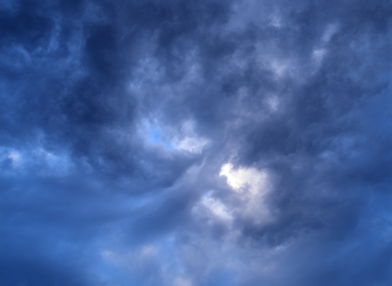 |
Mexico City, 2015
OK, so, this is maybe the biggest photo gallery I've ever posted. Keewi and I were in Mexico City over Christmas and New Year's 2015, with an old friend and a new friend, and we had a lovely time. A lot of what Mexico City is about, though, is the museums and the food. I leave the food photos to Keewi's on her blog, Keewi's Adventures, but I decided I just wouldn't be conveying the Mexico City experience without giving you tours of the amazing museums we went to. So, I held it to 100 rows – 300 photos – and I'm feeling pretty good about that, since that's just a tiny fraction of all the photos I took. You're welcome.
The "original" photos linked to in this set are reduced size, in fact. Also, most of the photos posted here have been digitally manipulated, but mostly just adjustments to brightness and contrast.
|
|
 |
| Palacio de Bellas Artes |
|
The tour begins at the Palace of Fine Arts, the Palacio de Bellas Artes. It's one of the most visible buildings in the town center, because of its amazing roof. It was having a special exhibit of Soviet art, particularly Soviet cubism, which was really neat. The artists here are not well-known in the West: in order, Kazimir Malévich (1913), Alexéi Shchúsev (1929), Kazimir Malévich again (1923), not sure (didn't get it), Natalia Goncharova (1913), Pável Filónov (1927), Kazimir Medunetsky (1920), two by Vasily Kandinsky (1916 and 1914) – you might have heard of him!, Liubov Popova (1918), Olga Rozánova (1916), and Alexandr Rodchenko (1920). The last one quite reminds me of a computer display, quite a few decades before any such thing existed.
|
|
 |
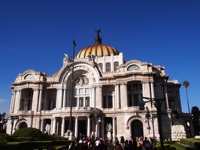
|
 |
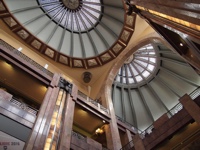
|
 |

|
 |
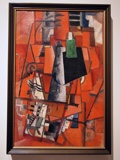
|
 |

|
 |
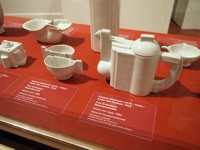
|
 |
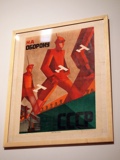
|
 |
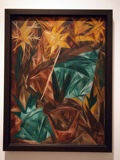
|
 |
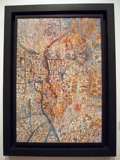
|
 |
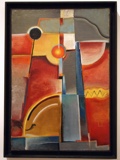
|
 |
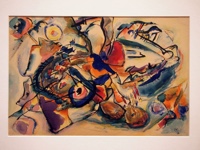
|
 |
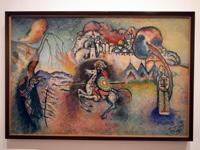
|
 |
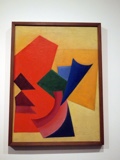
|
 |
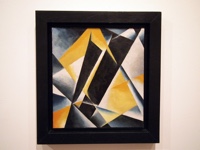
|
 |
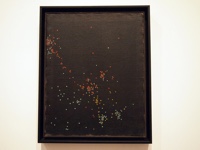
|
 |
|
Also at the Palacio de Bellas Artes are some murals by Diego Rivera. The first is from a 1933 mural about the Russian revolution. The other two are from a huge and famous mural from 1934, Man, Controller of the Universe. It was originally commissioned by Rockefeller; he didn't like it since it depicted him as a capitalist stooge, versus Lenin as a hero. Like any good capitalist stooge, Rockefeller therefore ordered the mural destroyed. Diego recreated it in Mexico a year later. It's an astounding work, including a cameo by Charles Darwin.
|
|
 |
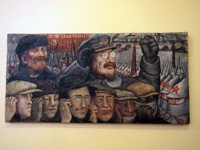
|
 |
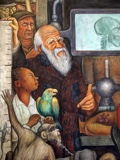
|
 |
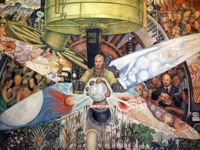
|
 |
| Walking Around I |
|
Now we're just walking around the central downtown area. The first three photos are from the central post office, an architectural marvel that is still a functioning post office.
|
|
 |
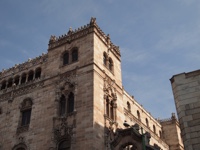
|
 |
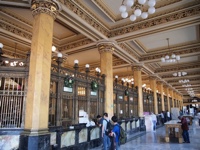
|
 |
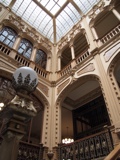
|
 |
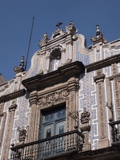
|
 |
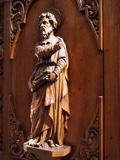
|
 |
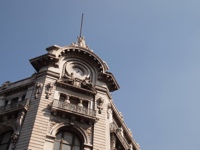
|
 |
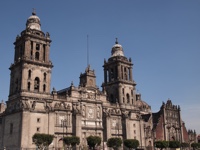
|
 |
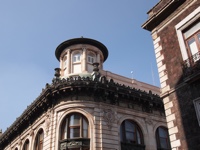
|
 |
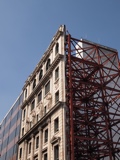
|
 |
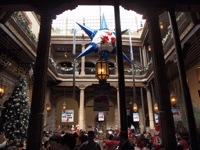
|
 |
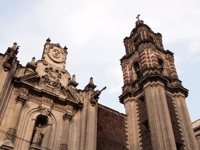
|
 |
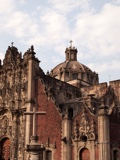
|
 |
|
These last three pictures are from a sculpture exhibit we stumbled upon, of pieces by Javier Marín. Very creative and beautiful.
|
|
 |
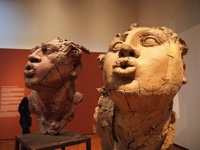
|
 |
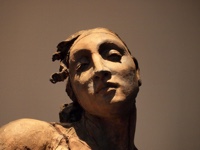
|
 |
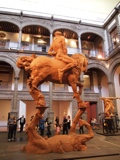
|
 |
| The Palacio Nacional |
|
The next photos are from the Palacio Nacional, which is like the White House of Mexico – the palace and the seat of power of the head of the executive branch of the government. It is also a museum, with more murals by Diego Rivera depicting different aspects of Mexico both before and after the conquistadors showed up and ruined the party.
|
|
 |
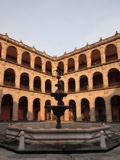
|
 |
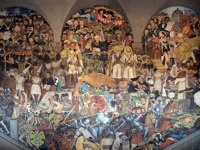
|
 |
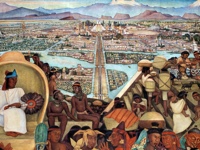
|
 |
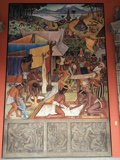
|
 |
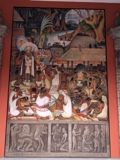
|
 |
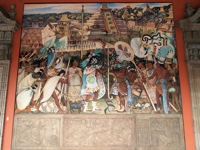
|
 |
|
There was a special exhibit in the palace, of masks from different cultures all around the world. Mostly traditional, some modern. I took so many photos; this is just a tiny taste. It was incredible.
|
|
 |
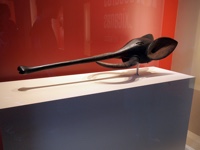
|
 |
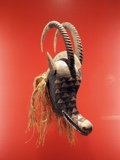
|
 |
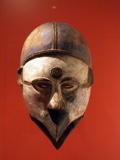
|
 |
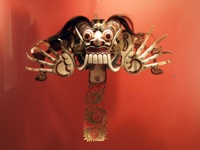
|
 |
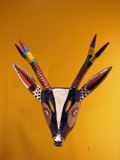
|
 |
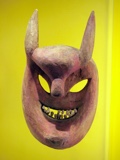
|
 |
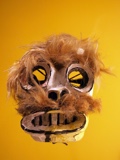
|
 |
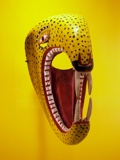
|
 |
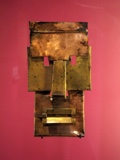
|
 |
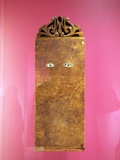
|
 |
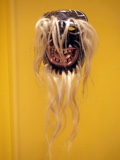
|
 |
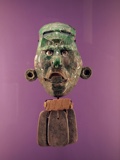
|
 |
| The Museo Nacional de Antropología |
|
The Museo Nacional de Antropología, the National Museum of Anthropology, is mind-blowing. We spent much of a day there, until we were ready to drop from exhaustion, and we saw maybe a quarter of it at best – maybe more like a sixth. The part we saw was the best collection of pre-Columbian art I've ever seen. The rest will have to wait until the next time I'm in town. Appreciating this museum is the project of a lifetime. These photos are from Christmas Day, by the way; one great thing about Mexico City is that museums and such are open on holidays!
|
|
 |
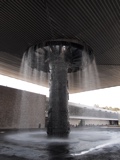
|
 |
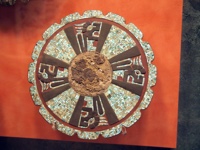
|
 |
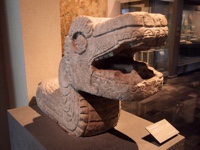
|
 |
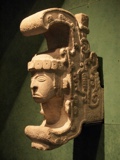
|
 |
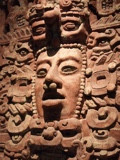
|
 |
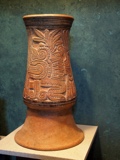
|
 |
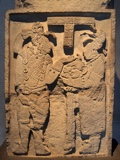
|
 |
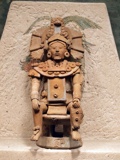
|
 |
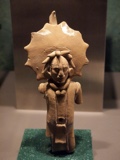
|
 |
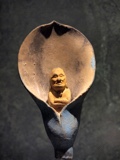
|
 |
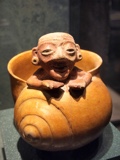
|
 |
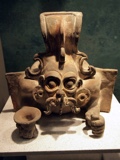
|
 |
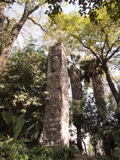
|
 |
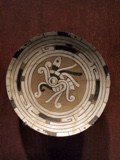
|
 |

|
 |
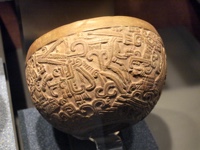
|
 |
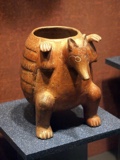
|
 |
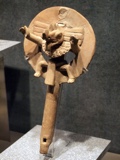
|
 |
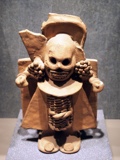
|
 |
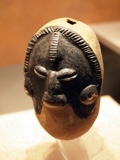
|
 |
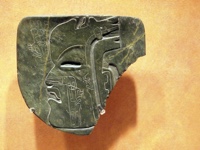
|
 |
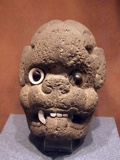
|
 |

|
 |
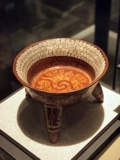
|
 |
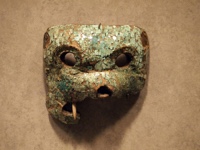
|
 |

|
 |
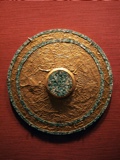
|
 |
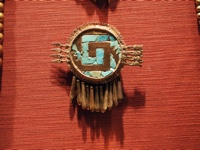
|
 |
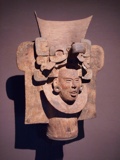
|
 |
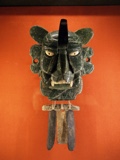
|
 |
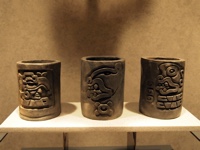
|
 |
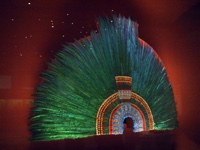
|
 |
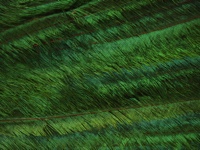
|
 |
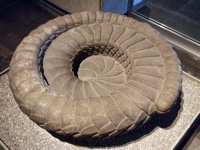
|
 |

|
 |
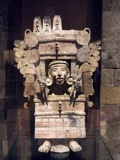
|
 |
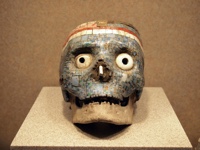
|
 |
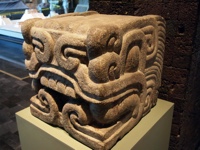
|
 |
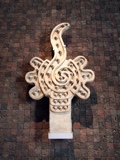
|
 |
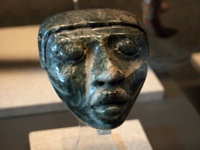
|
 |
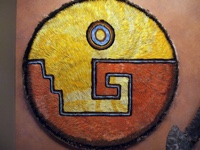
|
 |
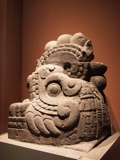
|
 |
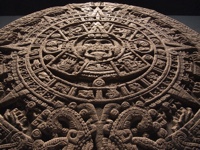
|
 |
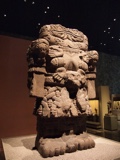
|
 |

|
 |
| Walking Around II |
|
Starting again at the Palacio de Bellas Artes, here are more photos from walking around the city, ending up at the cathedral on the central square, the Zócalo. Along the way, we happened upon not one but two street protests. The first was protesting for labor rights for workers at the national art museum, and against the creation of a Secretary of Culture, which I guess they felt was a step toward the privatization of culture (I'm not sure what the connection is there – if someone reading this understands the protest better, please let me know). The second was a protest about "The 43", the disappearance of 43 students from a rural teacher's college in Guerrero, Mexico, in 2014. The students were protesting government actions, were taken into custody by the local police, and were never seen again. Federal forces might have been involved in the disappearance, including the Mexican army. It's a huge political scandal there now, for obvious reasons. One Mexican I talked to said that the attitude of the protestors now was basically, "Look, we know they're all dead; we just want to know where their bodies are, so that we can mourn them." Which seems like the least one could ask.
|
|
 |
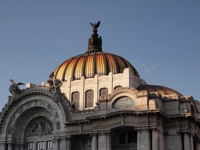
|
 |

|
 |

|
 |

|
 |
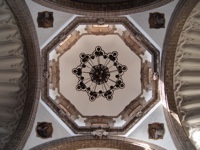
|
 |
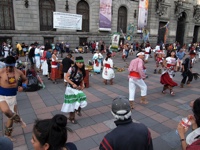
|
 |
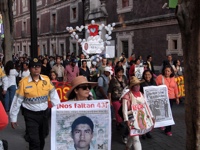
|
 |

|
 |
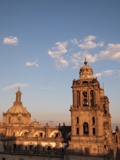
|
 |
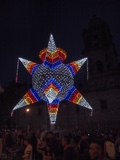
|
 |
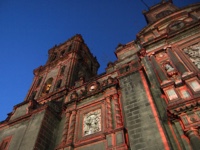
|
 |
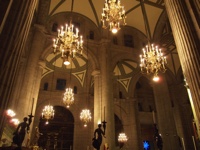
|
 |
| Food Market Tour |
The next day we went on a tour of the main food market in the downtown area. It is immense, spanning several city blocks and containing innumerable vendors and stalls. The tour took four hours, and was not for the faint of heart. You might think I'm showing you some pretty gross stuff in these photos – pig's heads, cow stomachs, a brain taco – but trust me, I have spared you the worst. It was fascinating, and delicious; we stopped for food several times, although I didn't partake of the brain taco (nor of the eyeball taco, not pictured here).
The first taco I ate is the third photo, prepared by the guys in the second photo; fantastic. The second taco I ate is the eighth photo, prepared by the guys in the ninth; also fantastic. Keewi bought a bunch of mole from the mole stand. Photo 18 is corn with a special fungus growing on it, considered a delicacy apparently; I didn't catch what it was called. The workers stripping the thorns from the nopales were very fun to watch – extremely fast. I didn't try the grasshoppers (photo 24), but I did eat an ant. The brain taco is photo 26, and photo 28 is, I believe, cow stomachs (a very interesting surface texture on those). The last photo is a huarache, a big open-faced meal shaped like a slipper (which is what huarache means). It is topped with potato, marinated chicken, cheese, and squash blossoms, in stripes. It was good, but not as good as the tacos we had had earlier.
|
|
 |

|
 |
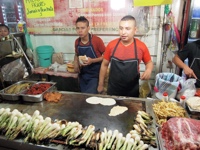
|
 |
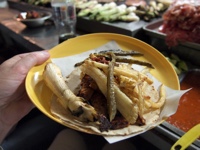
|
 |
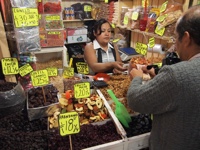
|
 |
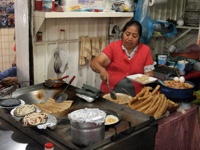
|
 |
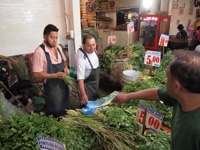
|
 |
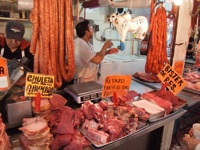
|
 |
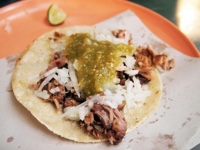
|
 |

|
 |
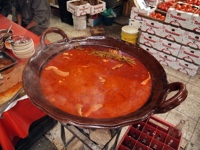
|
 |
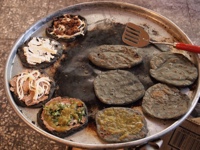
|
 |
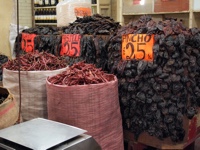
|
 |
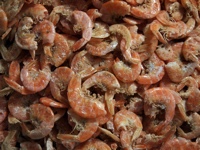
|
 |
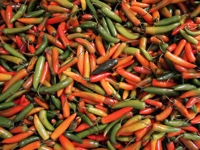
|
 |
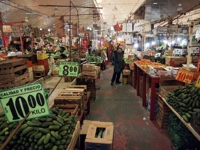
|
 |
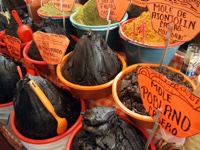
|
 |
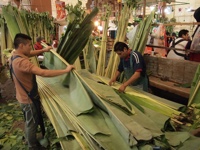
|
 |
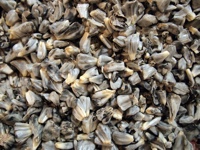
|
 |
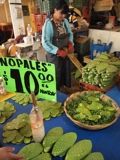
|
 |
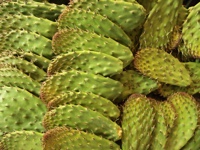
|
 |
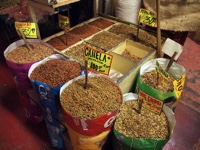
|
 |
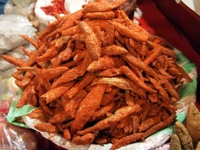
|
 |
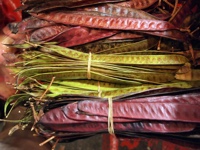
|
 |
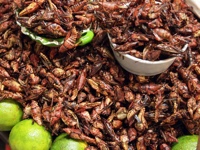
|
 |

|
 |
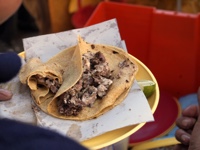
|
 |
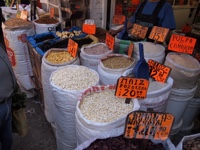
|
 |

|
 |
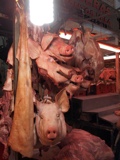
|
 |
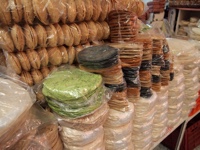
|
 |
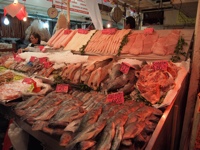
|
 |

|
 |
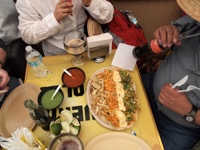
|
 |
| Walking Around III |
|
More walking around and popping into churches. There are churches everywhere you go, and sometimes they are real gems. Some of these, like the center shot in this set, are from the cathedral in the Zócalo, which we finally managed to visit during daylight hours.
|
|
 |
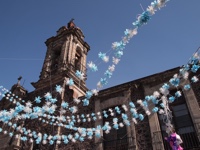
|
 |
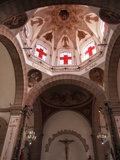
|
 |

|
 |
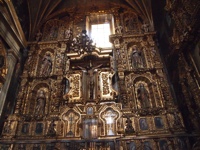
|
 |

|
 |
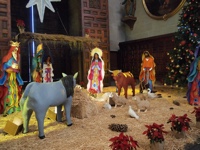
|
 |
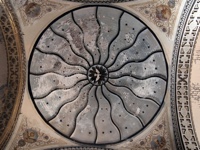
|
 |
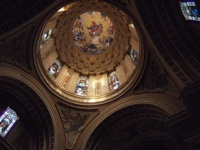
|
 |
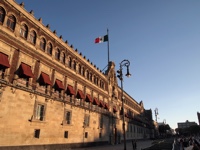
|
 |
| Our Lady of Guadalupe |
|
Visiting the Basilica of Our Lady of Guadalupe was like a surreal museum tour of sorts. It is the most visited Catholic pilgrimage site in the world, so it was fairly crowded, although not insanely so. We started out by seeing the reason that the whole kit and caboodle is there: a picture of the virgin Mary, seen in photo 4 here, that was supposedly not painted by any human hand, but rather just appeared. Or so I understand; I'm not Catholic, and I'm sure you can read about this on Wikipedia better than I can tell it here. Anyway, that's what everybody wants to see, and to keep the crowds from just standing in front of it for hours at a time, you literally get on a conveyor belt that moves you past the picture at a brisk pace. I kid you not. You get on the conveyor belt, you move along past the picture for perhaps ten or fifteen seconds, and you get off at the other end, having (one hopes) completed your praying or photographing or whatever you do during that time. So the photo here was taken from the conveyor belt. Then we visited the large and richly appointed gift shop, with replicas of the picture in every conceivable shape, size, and style (never let it be said that the Catholic Church doesn't know how to make money). Finally, we walked up a hill, visiting a multiplicity of other churches associated with the site; the one with the blue ceiling was absolutely lovely and was easily my favorite.
|
|
 |
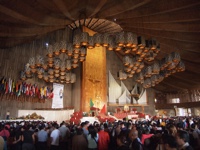
|
 |
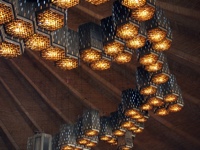
|
 |
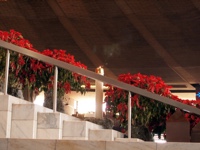
|
 |

|
 |
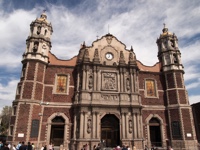
|
 |
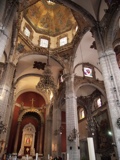
|
 |
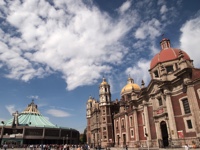
|
 |
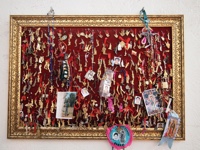
|
 |
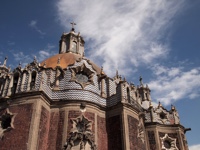
|
 |
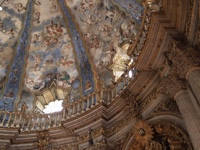
|
 |
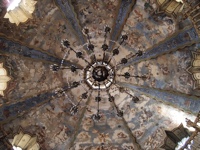
|
 |
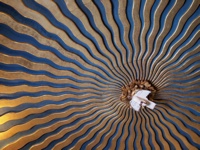
|
 |
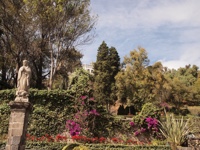
|
 |
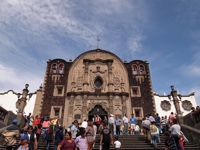
|
 |
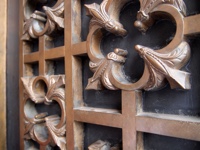
|
 |
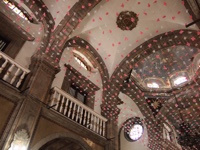
|
 |
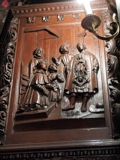
|
 |

|
 |

|
 |

|
 |
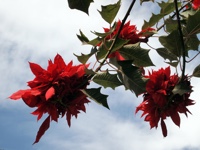
|
 |
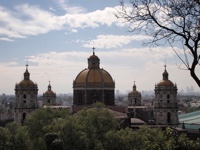
|
 |
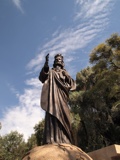
|
 |

|
 |
| Panteón Francés |
|
After taking a taxi back from Our Lady of Guadalupe, driven by a madman who talked and texted on his phone the whole time and didn't wear his seat belt, we had the afternoon free and decided to walk to a nearby cemetery, the Panteón Francés. A good decision; it was a beautiful cemetery, if somewhat run down. The toppling mausoleum in photo eight was probably a casualty of the 1985 earthquake.
|
|
 |
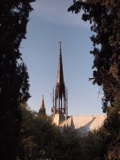
|
 |
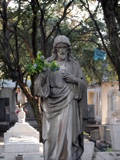
|
 |
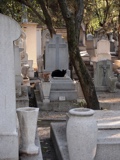
|
 |
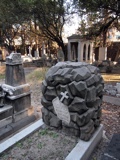
|
 |
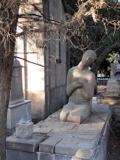
|
 |
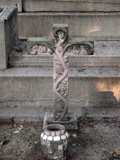
|
 |
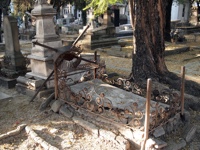
|
 |
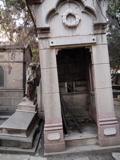
|
 |

|
 |
| Walking Around IV |
|
Another day, more walking, more churches.
|
|
 |
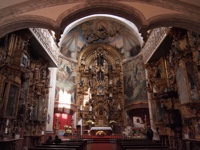
|
 |
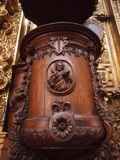
|
 |
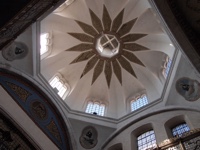
|
 |

|
 |
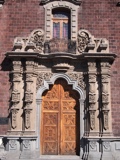
|
 |
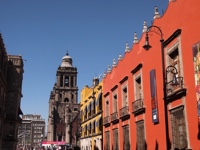
|
 |
| Templo Mayor |
|
Templo Mayor is an ancient Aztec temple in the heart of Mexico City. It is now an archaeological site and a museum. The first six photos are from the outdoor archaeological site, which has a walkway one can follow through it; the rest of the photos are from the museum. Photo 21 is of perhaps the creepiest sculpture I've ever seen, of the ancient Aztec god of death.
|
|
 |
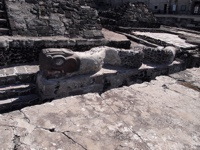
|
 |
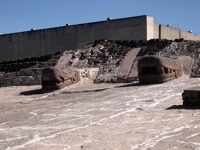
|
 |

|
 |

|
 |

|
 |

|
 |

|
 |
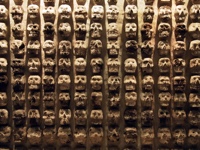
|
 |
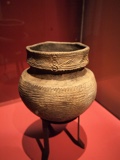
|
 |

|
 |

|
 |
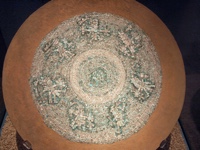
|
 |
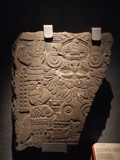
|
 |
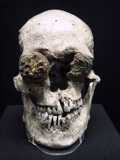
|
 |
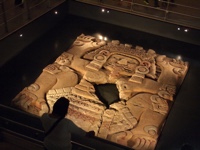
|
 |
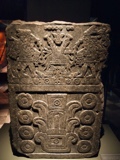
|
 |
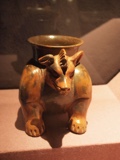
|
 |
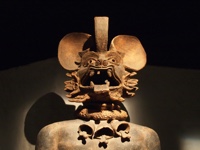
|
 |
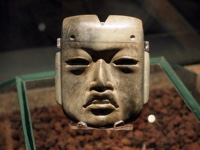
|
 |
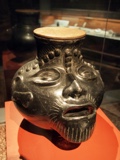
|
 |
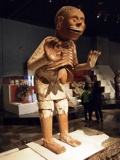
|
 |
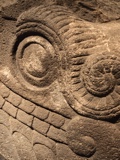
|
 |
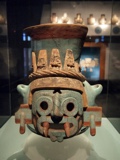
|
 |
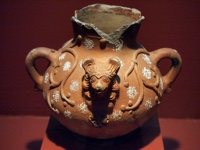
|
 |
| Walking Around V |
|
Churros and churches. Mexico City.
|
|
 |
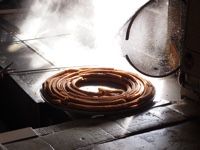
|
 |
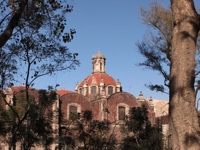
|
 |
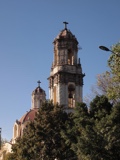
|
 |
| Museo Franz Mayer |
|
We had some extra time and were nearby, so we popped in to the Museo Franz Mayer, a museum of decorative arts. These photos are mostly closeups of details on trunks, dressers, chests, chairs, etc. Lots of really beautiful pieces.
|
|
 |
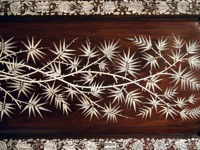
|
 |
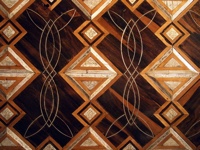
|
 |
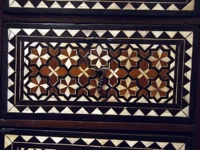
|
 |
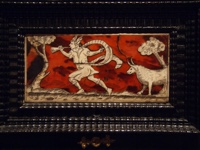
|
 |
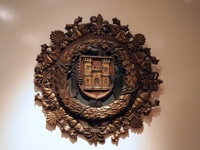
|
 |

|
 |
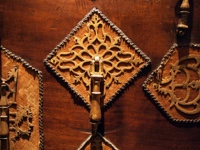
|
 |

|
 |
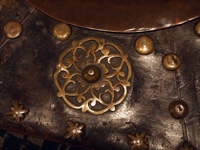
|
 |

|
 |
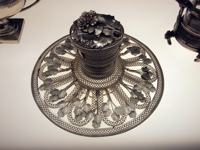
|
 |
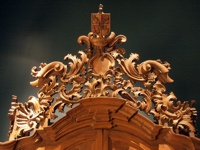
|
 |

|
 |
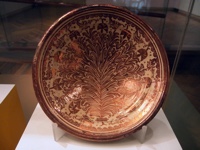
|
 |

|
 |
|
These photos are from a temporary exhibit of modern ceramic art in the museum.
|
|
 |
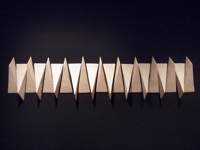
|
 |

|
 |

|
 |
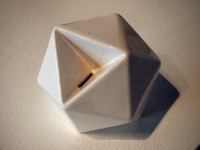
|
 |
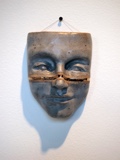
|
 |

|
 |
| Walking Around VI |
|
A nearby church that was damaged considerably in the 1985 earthquake. Notice the tilt in the second photo; can only hope that the church has been reinforced, because it's tilt over by something like 5 or 10 degrees.
|
|
 |
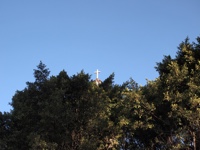
|
 |
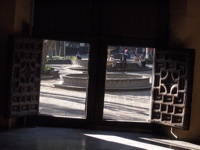
|
 |

|
 |
| Museo Frida Kahlo |
|
This museum is in the house that Frida Kahlo and Diego Rivera lived in together for many years. Kahlo died there, and the house was converted into a museum, still containing much of the furniture and art that they lived with. I was startled by Kahlo's self-portrait with Stalin, and the framed photos of Russian revolutionaries including Stalin in Kahlo's bedroom; I can understand being a Communist, but I have trouble understanding being a supporter of Stalin. Anyway. Photo seven is of a painting by Rivera that I quite liked; photo eight is a photo of a photo of Kahlo, the sexuality of which surprised me.
|
|
 |

|
 |
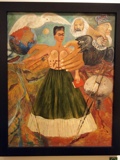
|
 |
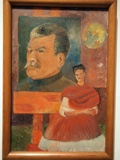
|
 |
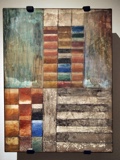
|
 |
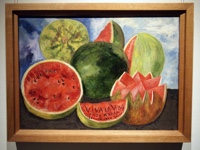
|
 |
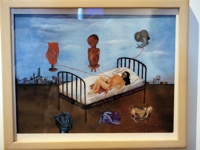
|
 |
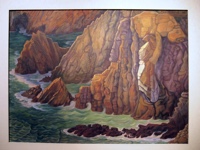
|
 |
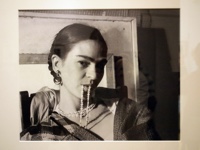
|
 |
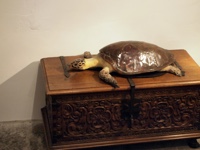
|
 |
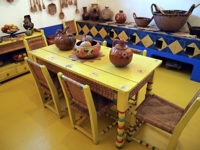
|
 |
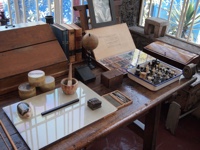
|
 |
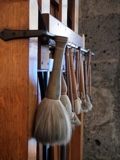
|
 |
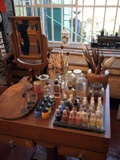
|
 |

|
 |
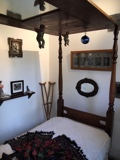
|
 |
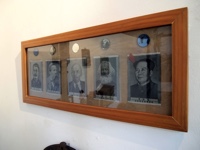
|
 |
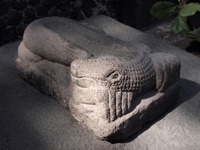
|
 |
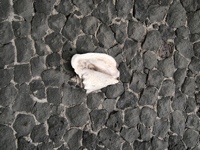
|
 |
|
There was a special exhibit at the museum of corsets, dresses, jewelry, etc. that belonged to Kahlo. A sobering testimonial to a life lived in great pain, due to her childhood polio and other things, but also lived with great joy.
|
|
 |
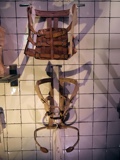
|
 |
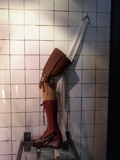
|
 |
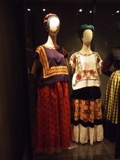
|
 |
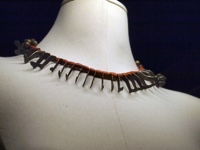
|
 |
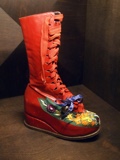
|
 |
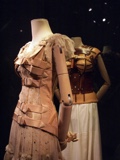
|
 |
| Teotihuacan |
|
Teotihuacan was a huge city outside of present-day Mexico City, settled by an unknown pre-Aztec culture. It had a peak population of perhaps 125,000 people, peaking early in the first millenium AD. It has several huge pyramids and lots of smaller sites that likely served residential, ceremonial, and other functions. We climbed to the top of the Pyramid of the Sun; I was actually ill that day, and by the time I got to the top I was dizzy and nauseated, but I made it. A fascinating thing about Teotihuacan is that, unlike Mayan and Aztec sites, there is no writing anywhere; the culture that established Teotihuacan apparently did not have written language yet. I find it amazing that people could build such a large and complex city without writing!
|
|
 |
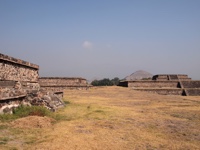
|
 |
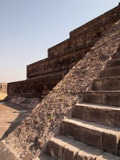
|
 |
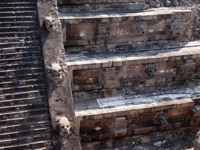
|
 |
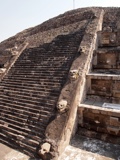
|
 |
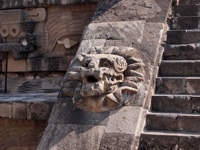
|
 |
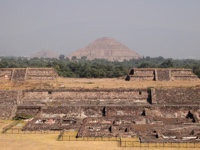
|
 |
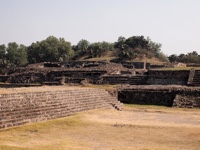
|
 |
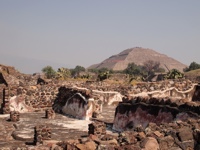
|
 |
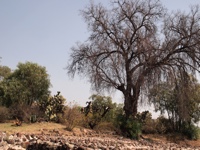
|
 |

|
 |
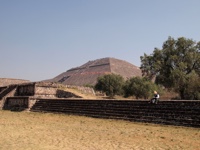
|
 |
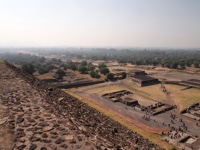
|
 |
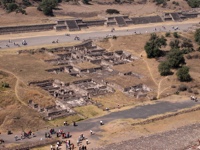
|
 |
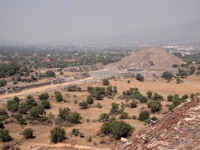
|
 |
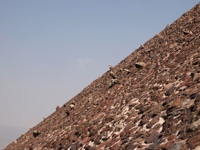
|
 |
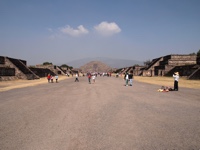
|
 |

|
 |
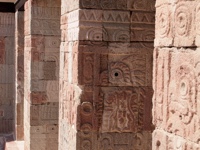
|
 |
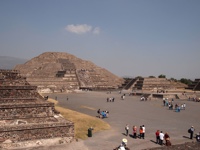
|
 |
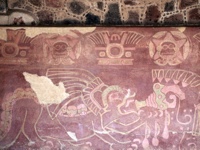
|
 |
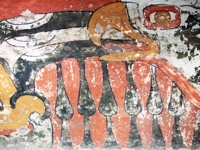
|
 |
|
We had a guide at Teotihuacan. After walking around the site, our guide took us for lunch at a nearby restaurant with a garden view of the Pyramid of the Sun.
|
|
 |

|
 |
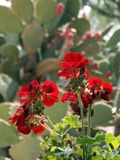
|
 |
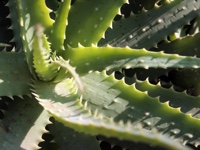
|
 |
| Convento de San Agustin Acolman |
|
On the way back to Mexico City from Teotihuacan, we stopped at an old convent from the 16th century, the Convento de San Agustin Acolman. According to our guide, this convent was where the piñata originated; Wikipedia says, "According to local records, the Mexican piñata tradition began in the town of Acolman, just north of Mexico City, where piñatas were introduced for catechism purposes as well as to co-opt the Huitzilopochtli ceremony." It also had some nifty art and architecture, much of which I failed to photograph. An interesting stop if you're in the area.
|
|
 |
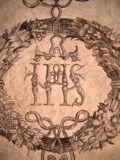
|
 |
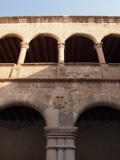
|
 |
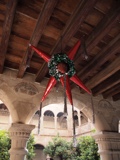
|
 |
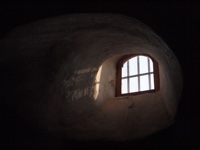
|
 |

|
 |
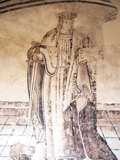
|
 |

|
 |
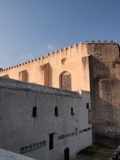
|
 |
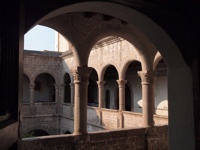
|
 |
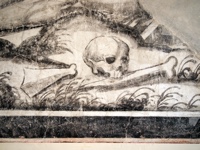
|
 |

|
 |
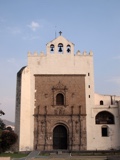
|
 |
| So... |
|
If you made it all the way through this page, you really deserve some sort of prize. I hope I've conveyed what an amazing place Mexico City is – its museums, its art, its architecture, its churches, its food, its traditions. I look forward to going back; with more than 150 museums (no joke!) and endless restaurants, markets, festivals, and so forth, it is really a bottomless well of culture.
|
|
 |
|
 |
